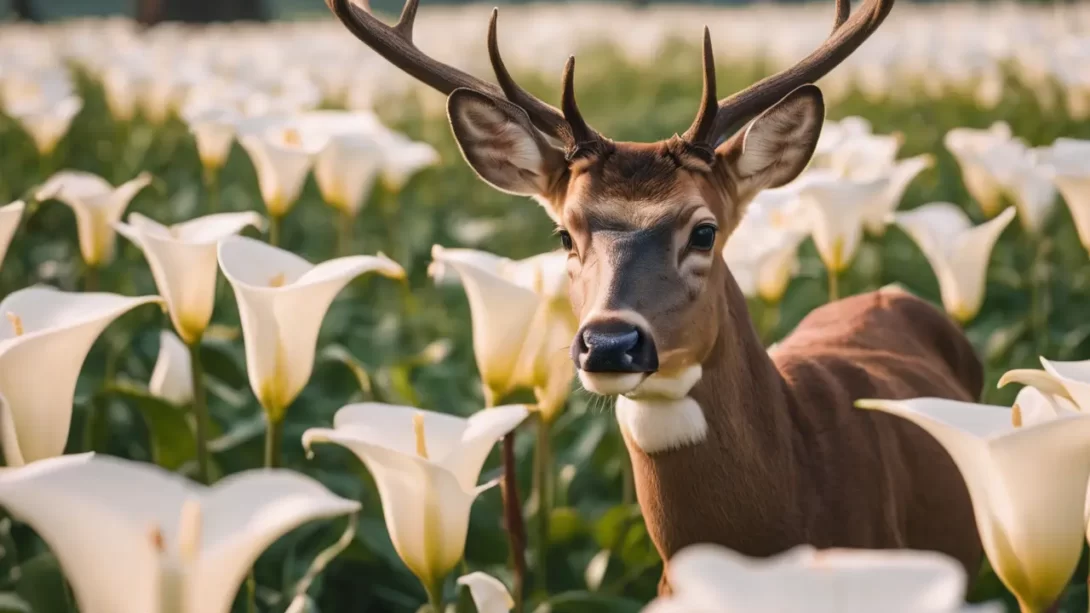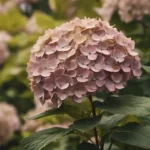Gardeners often face the challenge of protecting their beloved plants from wildlife, particularly deer. Among the various plants that adorn a garden, calla lilies stand out for their elegance and vibrant colors. However, a pressing concern for many garden enthusiasts is whether these beautiful plants fall prey to deer. This article aims to delve into the feeding habits of deer and assess the likelihood of them eating calla lilies, providing insights for gardeners on how to safeguard these plants.
Calla Lilies
Calla lilies, known botanically as Zantedeschia spp., are admired for their sleek, trumpet-shaped flowers and wide range of hues. Originating from Africa, these perennials are cherished in gardens and as cut flowers for their sophisticated and exotic appeal. Calla lilies thrive in moist, well-drained soil and can be grown in garden beds or containers. They require a balanced environment, not too dry or waterlogged, and benefit from full to partial sunlight. Understanding the specific needs and characteristics of calla lilies is crucial for maintaining their health and vibrancy.
Deer’s Feeding Habits
Deer are versatile feeders, often adapting their diet based on what is available in their environment. They primarily feed on leaves, twigs, fruits, and flowers, with preferences varying by season and geographical location. Deer are known for their ability to decimate a garden, especially when food is scarce. They tend to favor tender, new growth and are often attracted to plants with high moisture and nutritional content. However, deer also have aversions; certain plants’ textures and scents can deter them.
Do Deer Eat Calla Lilies?
Addressing the main question, it’s important to note that deer may occasionally feed on calla lilies, but these plants are not typically their first choice. The preference of deer for certain plants can vary based on their local habitat and available food sources. Calla lilies have certain characteristics that might make them less appealing to deer, such as their thick, waxy leaves. However, in situations where food is scarce, or if a deer’s natural preferences are not available, they might resort to eating plants they would usually avoid, including calla lilies.
Protecting Calla Lilies from Deer
For gardeners concerned about protecting their calla lilies and other plants from deer, several strategies can be employed. Physical barriers are often the most effective method. Fencing, especially if it is high enough and extends close to the ground, can prevent deer from accessing the plants. Netting can also offer protection, particularly for smaller garden areas or individual plants.
Using deer repellents is another common strategy. These can range from commercially available sprays to homemade solutions. Repellents work by emitting scents or tastes that are unpleasant to deer, discouraging them from feeding on treated plants. It’s important to note that the effectiveness of repellents can vary and may need regular reapplication, especially after rain.
Incorporating deer-resistant plants into the garden is a more subtle method of deterring deer. By surrounding calla lilies with plants that are known to be unappealing to deer, you can create a natural barrier. Plants such as lavender, sage, and ornamental grasses are often recommended for this purpose.
Alternative Measures for Deer Management
Beyond physical barriers and repellents, other methods of deer management can be considered. Habitat modification, for example, involves altering the garden in ways that make it less attractive to deer. This could include reducing the areas of dense cover where deer can hide or avoiding plants known to be favorites of deer.
Alternative Measures for Deer Management
In addition to physical barriers and repellents, there are alternative, non-invasive strategies for managing deer in gardens. Habitat modification, as previously mentioned, can be effective. This involves creating an environment that is less appealing to deer by reducing cover and eliminating their preferred food sources. Additionally, employing noise-makers or motion-activated sprinklers can temporarily deter deer from entering a garden.
Another approach is to maintain a natural buffer zone around the garden. Allowing a wilder, untouched area between the garden and the woods can provide deer with a more appealing feeding area, diverting them from cultivated plants like calla lilies.
Conclusion
In conclusion, while deer may occasionally feed on calla lilies, these plants are not typically among their preferred food choices. The risk of deer feeding on calla lilies can increase in situations where their preferred food sources are scarce. Gardeners have several options for protecting calla lilies and other vulnerable plants, ranging from physical barriers and deer repellents to more natural deterrents like deer-resistant plants and habitat modification.
Understanding the feeding habits of local wildlife and employing a comprehensive approach to garden management can help in successfully coexisting with deer while maintaining a beautiful and thriving garden. By considering the needs and behaviors of both plants and wildlife, gardeners can create a harmonious and balanced outdoor space. This approach not only preserves the beauty of individual plants like calla lilies but also contributes to the health and diversity of the broader ecosystem.



